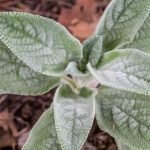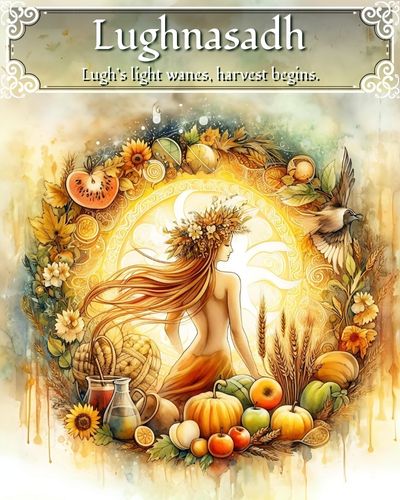
Approx. Reading time: About 12 Minutes

Introduction
A Comprehensive Guide to Foraging and Utilizing Stinging Nettle
Stinging nettle, with its prickly reputation and myriad of practical applications, is a remarkable wild plant that has captivated foragers, herbalists, and nature enthusiasts for centuries. This comprehensive article serves as a thorough exploration of stinging nettle, covering its variants, appearance, foraging locations, culinary and medicinal uses, magical properties, and important safety considerations.

Embracing the Nettle
What is Stinging Nettle and Its Variants
Stinging nettle, scientifically referred to as Urtica dioica, is a perennial herbaceous plant renowned for its stinging hairs and numerous practical applications. It belongs to the Urticaceae family and encompasses various variants, including the common stinging nettle (Urtica dioica) and the dwarf nettle (Urtica urens). Although the common stinging nettle is the most frequently encountered species, all variants share similar characteristics that define the nettle family.
Common Stinging Nettle (Urtica dioica) The common stinging nettle is a widely recognized species within the nettle family. It features toothed, heart-shaped leaves that grow in opposite pairs along its upright stems. The leaves are covered with stinging hairs or trichomes, which deliver a mild sting when touched. Common stinging nettle produces small, inconspicuous greenish flowers arranged in clusters. It typically reaches heights of 2 to 7 feet (0.6 to 2 meters) and forms dense stands or patches in suitable habitats.
Dwarf Nettle (Urtica urens) The dwarf nettle, also known as small nettle or burning nettle, is another variant of stinging nettle. It shares similarities with the common stinging nettle but tends to have smaller leaves and a more compact growth habit. The stinging hairs on the leaves of dwarf nettle can deliver a more intense sting compared to its common counterpart.
While these variants exist, it is important to note that all stinging nettle species, including the common stinging nettle and the dwarf nettle, share comparable characteristics. These encompass the characteristic toothed, heart-shaped leaves growing in opposite pairs, the presence of stinging hairs, and the greenish flowers arranged in clusters. Familiarizing oneself with these defining features aids in accurate identification during foraging expeditions, ensuring the safe and confident harvest of stinging nettle.
Identifying Stinging Nettle
Identifying stinging nettles during foraging excursions is crucial to distinguish it from other plants and ensure a safe harvesting experience. Here are key characteristics to help you confidently identify both the common stinging nettle and the dwarf nettle:
Common Stinging Nettle (Urtica dioica)
- Toothed, Heart-Shaped Leaves: Common stinging nettle features toothed, heart-shaped leaves that grow in opposite pairs along the stems. The leaves have a pointed tip and a slightly serrated or toothed edge. They are typically 2 to 6 inches (5 to 15 cm) long but can grow larger under optimal conditions.
- Stinging Hairs (Trichomes): One of the most distinctive features of stinging nettle is the presence of tiny stinging hairs, or trichomes, on its leaves and stems. These stinging hairs contain irritants that can cause a mild stinging sensation and skin irritation upon contact.
- Inconspicuous Greenish Flowers: Stinging nettle produces small, inconspicuous greenish flowers that are arranged in clusters called inflorescences. The flowers lack showy petals but are surrounded by leaf-like structures called bracts.
- Height and Growth Habit: Common stinging nettle can reach heights of 2 to 7 feet (0.6 to 2 meters). It tends to form dense stands or patches in suitable habitats, often spreading through rhizomes (underground stems) to form extensive colonies.
Dwarf Nettle (Urtica urens)
- Similar Leaf Characteristics: The dwarf nettle shares many leaf characteristics with the common stinging nettle. It has toothed, heart-shaped leaves that grow in opposite pairs along the stems. The leaves of dwarf nettle are typically smaller than those of the common species.
- Intense Stinging Hairs: The stinging hairs on the leaves and stems of dwarf nettle can deliver a more intense sting compared to common stinging nettle, making it important to exercise caution when handling this variant.
- Inconspicuous Greenish Flowers: Like the common stinging nettle, the dwarf nettle produces small, greenish flowers arranged in clusters.
By paying close attention to these identifying features, such as the toothed, heart-shaped leaves growing in opposite pairs, the presence of stinging hairs, the inconspicuous greenish flowers, and the height and growth habit of stinging nettle, you can confidently recognize and differentiate both the common stinging nettle and the dwarf nettle during your foraging endeavors.
Habitat and Foraging Locations
Stinging nettle exhibits a versatile nature when it comes to its habitat preferences, allowing it to thrive in various environments. Understanding where to find and forage stinging nettle is essential for successful and safe harvesting. Here are insights into the habitat and foraging locations of stinging nettle:
Rich, Moist Soils: Stinging nettle thrives in soils that are rich in organic matter and moisture. It prefers well-drained, fertile soils that provide the necessary nutrients for robust growth. Areas with loamy or clay soil often support healthy populations of stinging nettle.
Partially Shaded Areas: Stinging nettle is commonly found in locations that offer partial shade, such as woodlands, forest edges, and areas with tall vegetation. It can tolerate varying levels of sunlight but generally prefers partially shaded environments. Look for stinging nettle growing alongside paths, stream banks, or in clearings within wooded areas.
Disturbed Sites and Meadows: Stinging nettle has an adaptability that allows it to thrive in disturbed sites. You can often find it in areas that have experienced human activity or disruptions, such as abandoned fields, cleared land, or along road edges. Additionally, meadows and grasslands provide favorable habitats for stinging nettle, where it can form dense stands or patches.
Global Distribution: Stinging nettle is a widespread plant that can be found in numerous regions worldwide. Its adaptability to different climates and habitats has contributed to its ubiquity. From North America and Europe to Asia and beyond, stinging nettle is a common sight in various countries and continents.
When foraging for stinging nettles, keep in mind the importance of sustainable harvesting practices. Only gather what you need and be mindful of the plant’s role in the ecosystem. Additionally, ensure that you have proper permission to forage on private or protected lands.
Be cautious when navigating stinging nettle patches, as the plant’s stinging hairs can cause skin irritation. Wearing gloves, long sleeves, and pants can help protect you from accidental contact. Always practice responsible foraging and respect the natural habitats where stinging nettle grows.
By exploring the preferred habitats and foraging locations of stinging nettle, you can increase your chances of encountering this versatile plant. However, remember to prioritize safety, ethical foraging practices, and respect for the environment while embarking on your stinging nettle foraging journey.
Culinary and Medicinal Uses
Culinary
Stinging nettle, with its remarkable culinary versatility, offers a range of delectable possibilities for the adventurous forager. The young leaves and tender tops of stinging nettle are edible and provide unique flavors along with a plethora of health benefits. Here are some culinary uses for stinging nettle that can elevate your culinary creations:
- Soups and Stews: Stinging nettle’s tender leaves and tops can be incorporated into soups and stews, imparting a delightful earthy flavor. Add nettle to vegetable, chicken, or mushroom-based broths to infuse them with a nutritious and distinct taste. Whether in a hearty vegetable soup or a rich meat stew, stinging nettle can contribute a vibrant touch to your creations.
- Sautéed or Stir-fried Dishes: Sautéing or stir-frying stinging nettle leaves and tops is a quick and simple way to enjoy their unique flavors. Heat a pan with oil or butter, then toss in the leaves and tops. Sauté them briefly until wilted, and season with salt, pepper, and other desired herbs and spices. The result is a flavorful and nutritious side dish that pairs well with various main courses.
- Nettle Tea: Nettle tea is a classic and soothing beverage made from the leaves of stinging nettle. Steep dried or fresh nettle leaves in hot water for several minutes to release their flavors and healthful properties. Nettle tea offers a mild and refreshing herbal infusion that can be enjoyed on its own or combined with other herbs for added complexity.
- Nettle Pesto: Put a unique twist on traditional pesto by incorporating stinging nettle leaves. Blanched nettle leaves can be used as a substitute for basil in pesto recipes, offering a distinctive flavor profile. Combine blanched nettle leaves, garlic, nuts (such as pine nuts or walnuts), Parmesan cheese, olive oil, and a squeeze of lemon juice in a food processor to create a flavorful nettle pesto. This can be used as a spread, pasta sauce, or a dip for vegetables.
- Nettle-infused Oils and Vinegars: Nettle leaves can be used to infuse oils or vinegars, adding their unique taste to various culinary applications. Simply place fresh or dried nettle leaves in a clean jar, cover them with oil or vinegar, and let them infuse for a few weeks. The resulting nettle-infused oil or vinegar can be used in salad dressings, marinades, or as a flavoring for various dishes.
Before incorporating stinging nettle into your culinary endeavors, remember to handle it with care to avoid stinging hairs. Blanching, cooking, or drying the leaves neutralizes the stinging properties, ensuring their safety for consumption. When foraging, choose young, vibrant leaves and tops for the best flavors and nutritional value.
Explore the culinary potential of stinging nettle and let its unique flavors and health benefits inspire your gastronomic adventures. By incorporating this versatile plant into your dishes, you can savor its distinctive taste while harnessing the nutritional richness it offers.
Medical
Stinging nettle possesses a long-standing reputation in traditional medicine, revered for its nutritional abundance and potential therapeutic benefits. Explore the medicinal applications of stinging nettle and discover how this remarkable plant can be used to support various health conditions:
- Nutritional Richness: Stinging nettle is a nutritional powerhouse, containing an array of vitamins, minerals, and beneficial compounds. It is particularly rich in vitamins A, C, and K, as well as minerals like iron, calcium, and magnesium. The nutritional density of nettle makes it a valuable addition to a well-rounded diet, providing essential nutrients that support overall health and well-being.
- Allergies and Hay Fever: Stinging nettle has been traditionally used to alleviate symptoms associated with allergies and hay fever. Some studies suggest that nettle may help reduce inflammation and inhibit histamine release, which can contribute to allergic reactions. Nettle leaves can be brewed into teas or used as an ingredient in herbal preparations aimed at supporting respiratory health during allergy seasons.
- Joint Pain and Inflammation: Stinging nettle possesses potential anti-inflammatory properties, which may make it beneficial for individuals with joint pain or inflammatory conditions like arthritis. Some people find relief by applying nettle topically or consuming nettle extracts, tinctures, or teas. However, it is important to consult with a healthcare professional for appropriate guidance and to ensure compatibility with any existing medications or conditions.
- Urinary Tract Health: Stinging nettle has diuretic properties, meaning it can promote urine production and help maintain urinary tract health. It is believed to support kidney function and assist in flushing out toxins from the body. Nettle tea or herbal preparations may aid in reducing water retention and promoting a healthy urinary system.
- Anemia and Nutritional Support: Stinging nettle’s nutritional richness, particularly its iron and vitamin C content, makes it beneficial for individuals with iron-deficiency anemia. Iron is a vital component of red blood cells, and nettle’s iron content, along with its vitamin C, aids in iron absorption. Incorporating nettles into the diet, such as in teas or as a leafy green vegetable, may provide nutritional support for individuals with anemia.
When utilizing stinging nettle for medicinal purposes, it is important to consult with a healthcare professional, particularly if you have underlying health conditions or are taking medications. They can provide personalized guidance and ensure its appropriateness for your specific circumstances.
Stinging nettle leaves can be brewed into teas, infused into oils, or incorporated into tinctures and herbal preparations to harness its potential therapeutic benefits. However, always prioritize safety and consult with a healthcare professional to ensure proper usage and to address any potential interactions or contraindications.
Discover the potential health-supporting properties of stinging nettles and consider incorporating it into your wellness routine. However, keep in mind that while stinging nettle has a long history of traditional use, scientific research on its medicinal effects is ongoing.
Magical Properties
Stinging nettle, beyond its culinary and medicinal applications, has a rich history of magical and folklore associations. Discover the enchanting world of stinging nettle’s magical properties and its connection to mystical practices:
- Protection and Warding Off Negativity: In magical folklore, stinging nettle is often associated with protection and warding off negativity. It is believed to possess a natural defense mechanism, symbolizing resilience and the ability to shield oneself from harm. Stinging nettle can be used in rituals, talismans, or amulets to create a protective barrier and repel negative energies.
- Prosperity and Abundance: Stinging nettle is also associated with prosperity and abundance in magical traditions. It is believed that the plant’s vibrant growth and nutritional richness symbolize fertility, growth, and bountiful harvests. Stinging nettle can be utilized in spells or rituals aimed at attracting prosperity, abundance, and overall well-being.
- Good Luck and Fortune: In some magical practices, stinging nettle is regarded as a plant that brings good luck and fortune. Its connection to luck is believed to stem from its ability to thrive and flourish in diverse environments, representing adaptability and resilience. Stinging nettle can be included in rituals or charms intended to enhance one’s luck or attract fortunate circumstances.
- Purification and Cleansing: Stinging nettle is associated with purification and cleansing properties in magical folklore. Its stinging hairs are seen as symbolic of the plant’s ability to remove negativity, toxins, and stagnant energy. Stinging nettle can be incorporated into rituals, smudging, or herbal baths to cleanse spaces, objects, or individuals energetically.
When working with stinging nettle for magical purposes, it is important to approach it with respect and intention. Create a sacred space, align your energy, and focus on your desired intentions. Whether incorporating stinging nettle in rituals, spellwork, or creating talismans, allow your intuition to guide you and honor the plant’s symbolism.
Remember, magical practices are highly personal, and interpretations may vary. Respect the traditions and beliefs of different magical systems while embracing your own spiritual path. It is important to note that while stinging nettle has magical associations, its magical properties are rooted in folklore and subjective beliefs, rather than empirical evidence.
Explore the magical properties of stinging nettle and embrace its connection to protection, prosperity, and abundance. Allow this enchanting plant to inspire your mystical journey and infuse your practices with its unique symbolism.
Safety Considerations
Safety considerations are paramount when foraging for stinging nettle to ensure a positive and secure experience. While this remarkable plant offers numerous benefits, it is important to be aware of potential hazards associated with its stinging hairs. Here are essential safety guidelines to keep in mind:
- Protective Measures: When harvesting stinging nettle, it is crucial to protect yourself from skin irritation. Wear gloves, long sleeves, and pants to prevent direct contact with the stinging hair. Additionally, consider using tools such as scissors or pruners to handle the plant, minimizing the risk of accidental contact.
- Accurate Identification: Properly identifying stinging nettles is essential to avoid accidental contact with other harmful plants. Familiarize yourself with its distinguishing features, such as toothed, heart-shaped leaves growing in opposite pairs and the presence of stinging hairs. If uncertain about identification, consult reliable field guides or seek guidance from experienced foragers or botanists.
- Harvesting Locations: Ensure that the stinging nettle you gather is from areas free of pesticides, herbicides, and other contaminants. Avoid foraging near roadsides, industrial sites, or locations where chemical treatments may have occurred. Selecting clean, unpolluted environments ensures the safety and quality of the harvested nettle.
- Neutralizing Stinging Hairs: Before consuming stinging nettles, it is important to neutralize the stinging hairs to prevent skin irritation. Cooking or blanching the nettle leaves effectively neutralizes the stinging components, making them safe for consumption. Boiling nettle leaves for a few minutes or incorporating them into cooked dishes will render them sting-free.
- Medical Disclaimer: While stinging nettle has been traditionally used for various medicinal purposes, it is essential to consult with a healthcare professional before using nettle medicinally, particularly if you have certain medical conditions or are taking medications. Nettle may interact with medications or exacerbate certain health conditions. Individual responses and tolerances may vary, so personalized guidance from a healthcare professional is crucial to ensure safe and appropriate usage.
Always prioritize your personal safety and well-being during foraging expeditions. If you have any doubts or concerns, consult local experts or experienced foragers for guidance. Respecting safety considerations allows for a positive and rewarding foraging experience, ensuring that you can enjoy the benefits of stinging nettle with confidence and peace of mind.
Conclusion
Stinging nettle stands as a captivating and multifaceted plant that beckons foragers and herbal enthusiasts alike to embark on a journey of exploration and discovery. Its culinary delights, medicinal benefits, and magical associations make it a plant of immense value and intrigue. However, in the pursuit of harnessing the potential of stinging nettle, it is vital to approach it with a sense of responsibility and awareness. By employing responsible foraging practices, ensuring accurate identification, and prioritizing safety considerations, you can fully embrace the wonders of nettle while safeguarding your well-being. Let the knowledge and respect you cultivate for this remarkable plant deepen your connection with the natural world and unlock the abundant treasures it has to offer. May your encounters with stinging nettle be rewarding, enriching, and imbued with a profound sense of harmony between humanity and nature.













